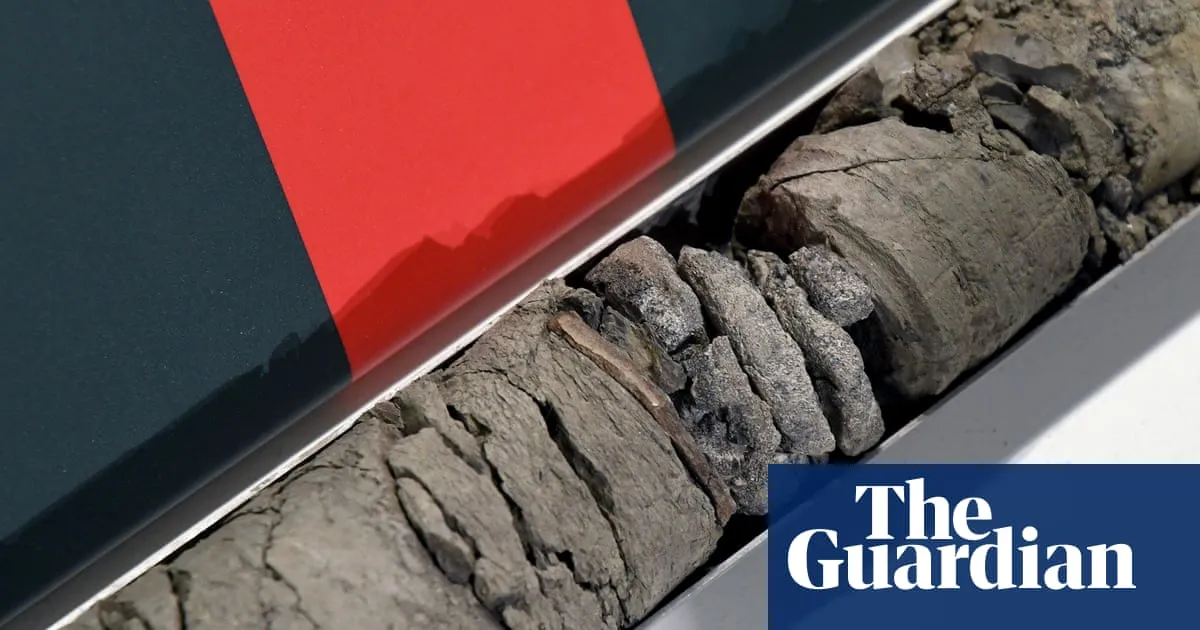
A remarkable fossil bone discovery has taken place right under the parking lot of the Denver Museum of Nature and Science, a renowned destination for dinosaur enthusiasts. This astonishing find emerged from a borehole drilled over 750 feet (230 meters) deep, primarily intended to explore the potential for geothermal heating at the museum. The museum attracts visitors of all ages, particularly those captivated by its impressive dinosaur displays, featuring full-size skeletons that leave children and adults alike in awe.
While the newly discovered fossil may not boast the grandeur of a towering dinosaur skeleton, the sheer improbability of finding it is noteworthy. Museum officials described the chances of encountering a dinosaur bone within such a narrow borehole—only a couple of inches (5 cm) wide—as astonishingly slim. “Finding a dinosaur bone in a core is like hitting a hole in one from the moon. It’s like winning the Willy Wonka factory. It’s incredible, it’s super rare,” stated James Hagadorn, the museum’s curator of geology. Notably, only two similar discoveries have been reported in borehole samples globally, making this find particularly exceptional, especially on the grounds of a dedicated dinosaur museum.
The fossilized remains are believed to be a vertebra from a small, plant-eating dinosaur that roamed the Earth approximately 67.5 million years ago during the late Cretaceous period. This era came to a dramatic end around 66 million years ago, attributed to a catastrophic asteroid impact, as per scientific consensus. Alongside the dinosaur bone, fossilized vegetation was also discovered in the borehole, suggesting that this creature lived in a lush, swampy environment. “This animal was living in what was probably a swampy environment that would have been heavily vegetated at the time,” explained Patrick O’Connor, curator of vertebrate paleontology at the museum.
Throughout the years, the Denver area has yielded numerous significant dinosaur discoveries, including parts of iconic species such as Tyrannosaurus rex and various triceratops fossils. However, O’Connor emphasized that this discovery stands out as the deepest and oldest find in Denver to date.
Reactions from experts in the field regarding the legitimacy of this find have varied. “It’s a surprise, I guess. Scientifically, it’s not that exciting,” remarked Thomas Williamson, curator of paleontology at the New Mexico Museum of Natural History & Science in Albuquerque. He noted the difficulty in identifying the exact species of dinosaur. Conversely, Erin LaCount, director of education programs at the Dinosaur Ridge track site near Denver, expressed enthusiasm, stating, “The find is absolutely legit and VERY COOL!” LaCount suggested that the fossil's shape indicates it could belong to a duck-billed dinosaur or a thescelosaurus, a smaller but somewhat similar species.
The fascinating borehole fossil is now showcased at the Denver Museum of Nature and Science. However, museum officials have no plans for further excavations under the parking lot. “I would love to dig a 763-foot (233-meter) hole in the parking lot to excavate that dinosaur, the rest of it. But I don’t think that’s going to fly because we really need parking,” Hagadorn humorously concluded.